ITMO University now has a new experimental complex: an anechoic chamber for testing antennas and studying the electrodynamic characteristics of the latest artificial materials. Andrey Sayanskiy, a Research Associate at the Department of Physics and Engineering, told ITMO.NEWS about the new complex and what its means for the university.
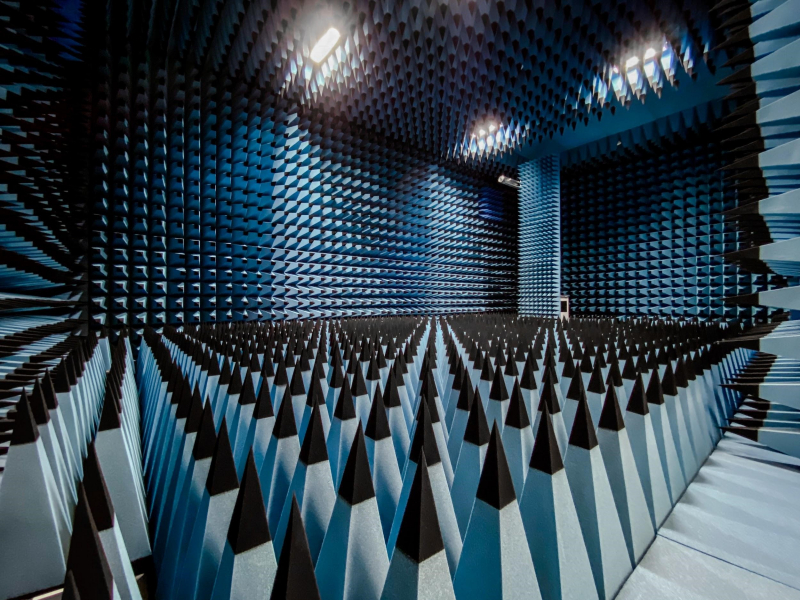
On the first floor of ITMO University’s building on Lomonosova St., there is a new room with metal walls. It is unique in the sense that it does not transmit radio waves. This is an anechoic chamber recently built for the Department of Physics and Engineering.
Andrey Sayanskiy, a Research Associate at the Department, explained what an anechoic chamber is and what it can be used for:
“Basically, anechoic chambers are used for measurements related to antenna technologies. Let's say you have an antenna and you want to measure its characteristics. If you do this in a field, in a room, or on a street, then the result of your measurements will be affected by numerous re-reflections from the ground, walls, and people nearby. Therefore, special rooms are used for testing antennas, where all surfaces are covered with a radio-absorbing material that eliminates this effect. Chambers come in completely different sizes – from very small, the size of a small room, to huge ones that fit cars and even airplanes”.

Andrey Sayanskiy
ITMO University’s new anechoic chamber occupies more than 50 square meters – it is part of a large laboratory complex, where one can carry out a full cycle pilot study: from making experimental samples to testing. It took several months to find a place for the complex and more than six months to construct the chamber and renovate.
A room with no echo
Next to the room entrance, there are workplaces for laboratory staff – there is everything one needs to prepare for experiments and their implementation. A milling machine and a special 3D printer are actively used to create samples.
The first thing people see when entering the anechoic chamber is the walls covered with porous blue material in the form of small pyramids. Absorbers used in recording studios have a similar look. The shape and size of the pyramids that make up the "relief" of the walls are specially selected to absorb waves of exactly the range with which they work in this room. Sound waves that are audible to the human ear are also absorbed. Therefore, inside you can hear how your voice sounds without the subtle echo that is present in any ordinary room.
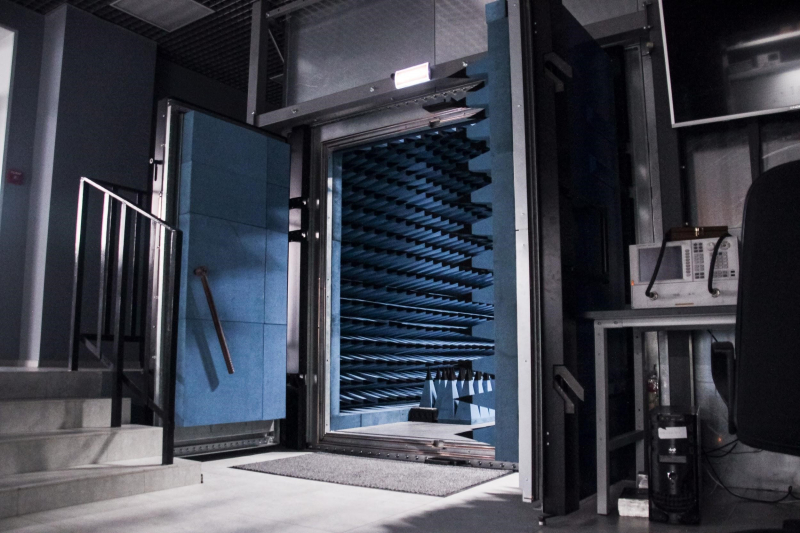
The entrance to the anechoic chamber
“Inside it seems like everything is a bit muffled,” says Andrey Sayanskiy. “If you take your phone and turn the music on in an ordinary room, then the sound will be completely different. Does this muffledness and lack of echo put pressure on a person? In fact, it doesn’t – the feeling is quite comfortable".
Technicalities
The chamber’s radio wave absorption cover is an important but not the most complex part of the new anechoic chamber. In addition to the measurement room, expensive and sophisticated equipment is also required.
“Apart from the small pyramids that cover everything, there is a triaxial positioner here – in other words, a scanner,” explains Andrey Sayanskiy. “This is a device that allows to move a measuring antenna with sub-millimeter precision for subsequent registration of the electromagnetic field near the objects under study. There is also a special measuring stand based on a rotating device designed to measure the scattering characteristics of the objects under study, as well as to measure the directivity characteristics of antennas".
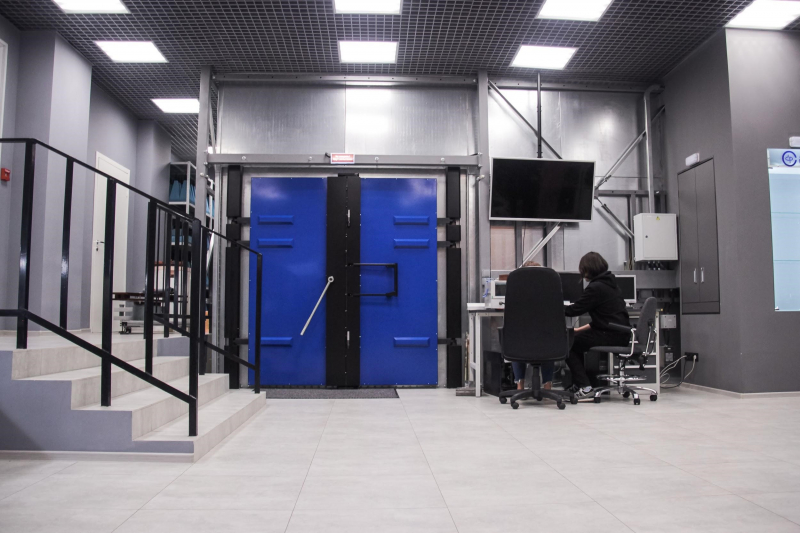
New laboratory space
All equipment is prepared for running in the anechoic chamber, i.e. all protruding metal parts are covered with absorbing material. This prevents affecting the results of the experiment.
There is also a special device, a vector network analyzer (VNA), that is especially important. With its help, scientists can measure the characteristics of signal transmission through an object, as well as the characteristics of the reflected signal from its surface. For the user's convenience, the device is installed outside the chamber. Radiofrequency cables (RF) run from the device, which, through special filters, can connect to RF cables laid under special shelters inside the chamber.
All devices are controlled remotely using special software developed with the participation of department members.
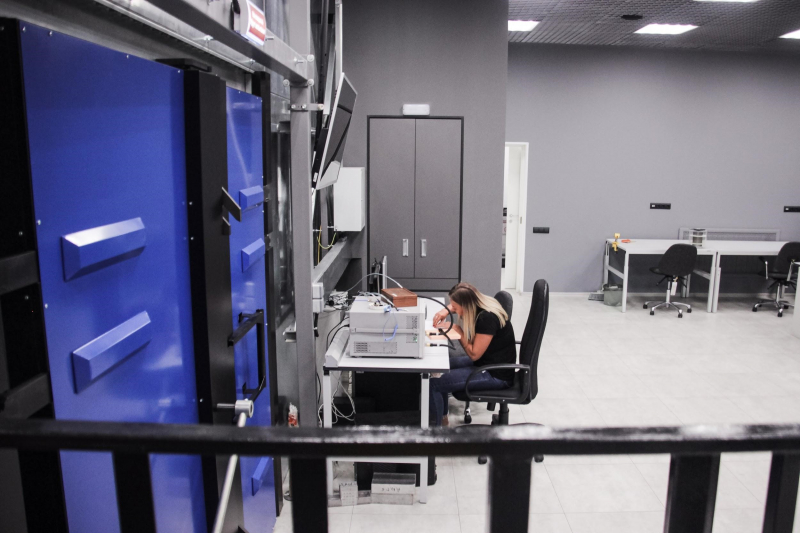
“Our old anechoic chamber, which was located on Vasilievsky Island, was in a separate room and was not shielded, that is, despite the presence of absorbing material, external signals still passed into the chamber. Now, we can be sure that external sources are not able to affect the quality of our measurements,” says Andrey Sayanskiy.
From antenna to quadcopter
The chamber’s coating and the equipment installed in it make it possible to carry out experiments in the frequency range from 800 MHz to 20 GHz even now.
“To assess what it is, we can give you an example: a mobile phone operates at frequencies ranging from 800 MHz to 2.5 GHz,” explains Andrey Sayanskiy. “The most widespread Wi-fi has a frequency of 2.4 GHz, while new equipment that is not yet in wide use has a frequency of 5 GHz. GPSGlonass navigation receivers operate at frequencies from 1 to 1.6 GHz. When it comes to the development of 5G networks, there is a need to create antennas operating at frequencies up to 26 GHz. Our chamber covers practically all these frequencies”.
The new anechoic chamber has already tested various types of antennas, including an X-band lens antenna, and measured the scattering characteristics of various objects – from small dielectric spheres to a quadcopter.
“The scattering of an object is its response to external influence by electromagnetic radiation,” says Andrey Sayanskiy. “If you irradiate an object from the outside, it turns into a radiation source. This phenomenon is actively used in radio positioning when it is required to determine the position of an object”.
24-hour continuous observation
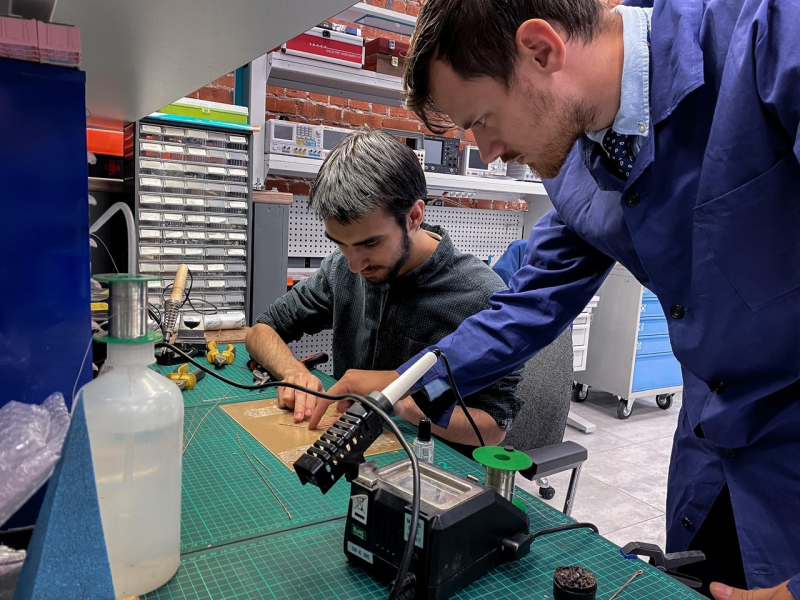
Students at the Department of Physics and Engineering
According to Andrey Sayanskiy, scientists spent most of their time on preparing the sample and equipment for the experiment. The engineer needs to secure the space and install the object. If the scattering characteristics are measured, then the scientists also must correctly position the receiving antenna, which receives radiation scattered from the object.
“A person who has conducted a large number of measurements understands that, basically, to measure the scattering characteristics of the object under study, it takes at least one day. Why so long? First, you need to assemble the stand and prepare for measurements, then measure, and analyze the data. If the experiment is set up correctly, it takes a couple of hours, but there can always be unforeseen issues that can lead to the need for repeated measurements. Therefore, it is always necessary to plan ahead your time,” he says. “However, sometimes there is a need for measurements that require hours of continuous measuring. In this case, the experimenter has to stay at work until the end of the process. Any little detail must be taken into account in research – even a slightly ajar door can seriously affect the result”.
Unique complex
“Today, ITMO University’s complex is one of the most advanced in the city”, emphasizes staff of the Department of Physics and Engineering. Therefore, not only scientific work is carried out here, but also research for industrial partners.
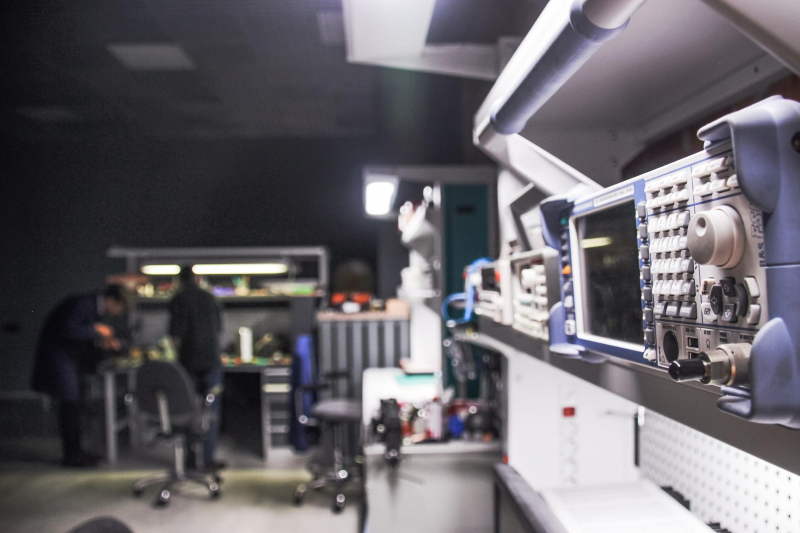
Spectrum analyzer
“Anechoic chambers are very expensive, especially for universities,” tells Andrey Sayanskiy. “Even when people from companies come to us, they say that they do not have such equipment. Here, you can solve a full cycle of tasks from development to testing samples".
Accessibility for students
More than 70% of Master’s students of the Department of Physics and Engineering are employed at the faculty during the first year, at this time they have an opportunity to fully engage in research in laboratories. Students of the Master's program “Radiofrequency systems and devices” (in Russian) are already working in the new radiophysical complex.
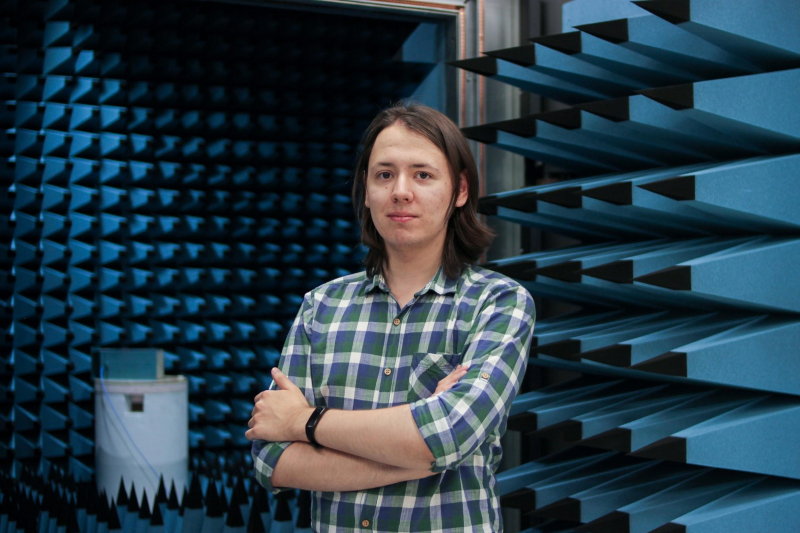
Ildar Yusupov
“I got a job at the faculty a year ago, when I finished my first year of master's degree, and began work on RFID tags (the project “Miniature RFID tags for wireless identification at a long distance", supported by the Russian Science Foundation) under the guidance of a Research Associate Alexey Slobozhanyuk,” says Ildar Yusupov, a graduate of the Radiofrequency systems and devices Master’s program. “First, we design structures that will work as tags for radio frequency identification, then we construct them and use a vector network analyzer (VNA) to check whether the resulting tags meet the characteristics that we set. Then we test these tags on commercial equipment: an RFID reader, which is used in stores, warehouses, etc.".
As Ildar notes, now the laboratory is an open large space, where even more people (about 20 people) can work simultaneously and comfortably than before, when the laboratory was in a small room on the Kadetskaya line of Vasilyevsky Island.

New laboratory space
“It's cool that while still students we have the opportunity to work with professional equipment,” continues Ildar. “At this moment, you are not only preparing yourself for professional activity, but also learning how to handle expensive equipment. The equipment is very delicate, any mishandling can lead to breakdown, therefore accuracy comes first”.
Последние новости
-
-
A High-Efficient Switchable Third Harmonic Source Developed by ITMO Researchers
-
Quantum Liquid “Cooling” Without “Evaporation” Described at ITMO
-
ITMO Scientists Create Perovskite Memristor To Withstand 1,500+ Rewrite Cycles
-
Butterfly Effect: ITMO Researchers Create Colorful Perovskite Films for Optoelectronics
